In this blog post, you’ll learn how to cook couscous perfectly every time, in 10 minutes, and with simple ingredients.
Couscous is a versatile ingredient you can use as an alternative to rice, pasta, or grains.
Thanks to its neutral flavor and light texture, it’s great as a base for most dishes. Try it with tagine, hummus, and falafel.
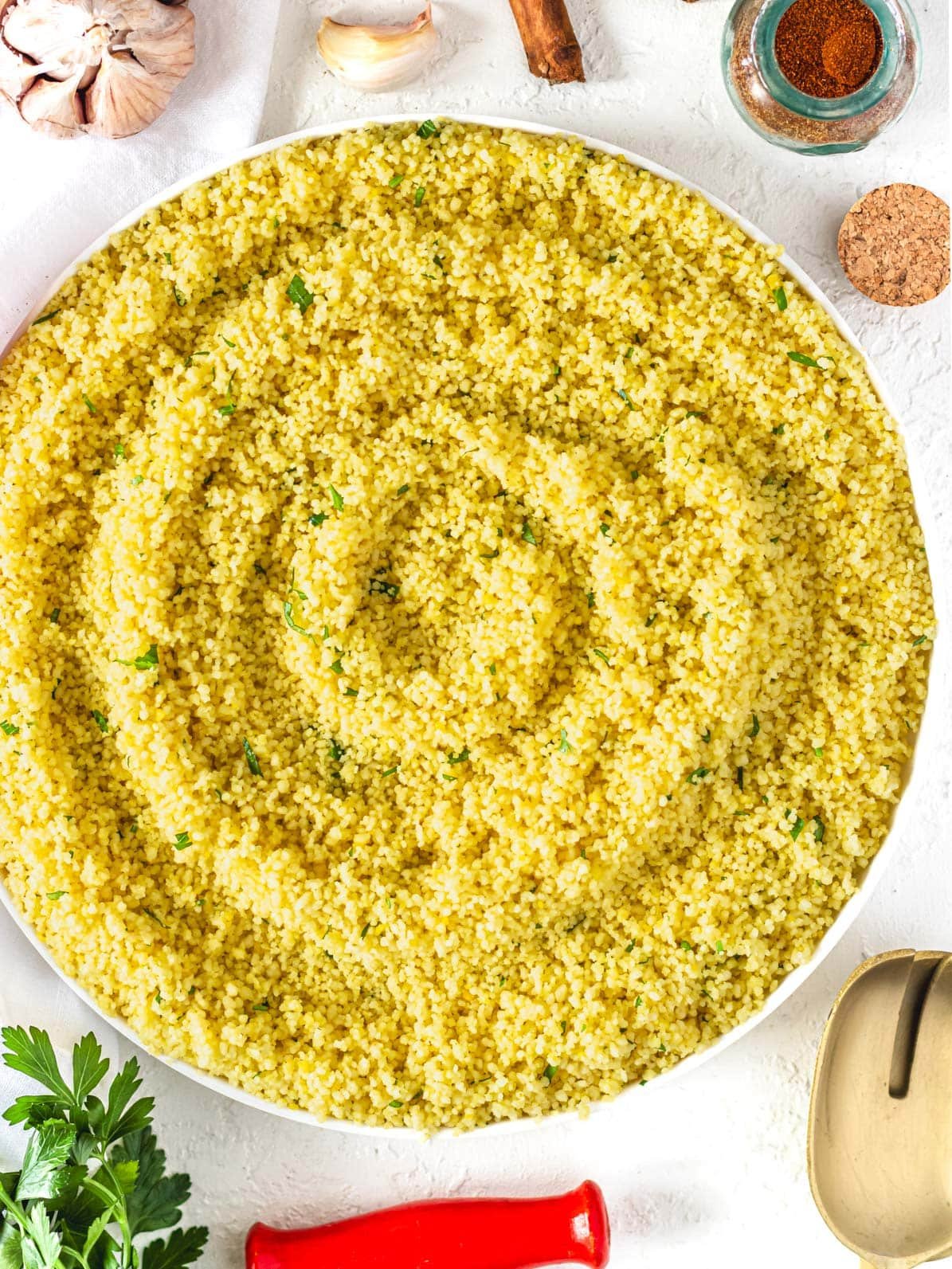
Table of Contents
Dietary Note: this recipe is suitable for a vegetarian, vegan, and gluten-free diet.
You’ll love couscous because it’s a breeze to make. You can pair it with almost anything since it has a pleasantly mild flavor with slightly nutty notes.
You can use plain, seasoned with extra virgin olive oil, lemon, and fresh herbs.
Or you can make Moroccan couscous with toasted nuts, dried fruits, and spices. Its flavor and aroma are divine!
Couscous is a favorite ingredient in the Mediterranean and North African countries because it can transform simple dishes like Moroccan carrot salad, lentil tabbouleh, and Shirazi salad into delicious and satisfying meals.
Use it as a base to make grain bowls like this couscous with vegetables, couscous salad, or chickpea salad.
Pair it with saucy vegetable and legume stews; it’ll absorb their flavors in the most wonderful way 😋.
Its versatility and ease of use make it an excellent ingredient for your pantry. So don’t miss out on this beautiful ingredient; learn how to make couscous at home.
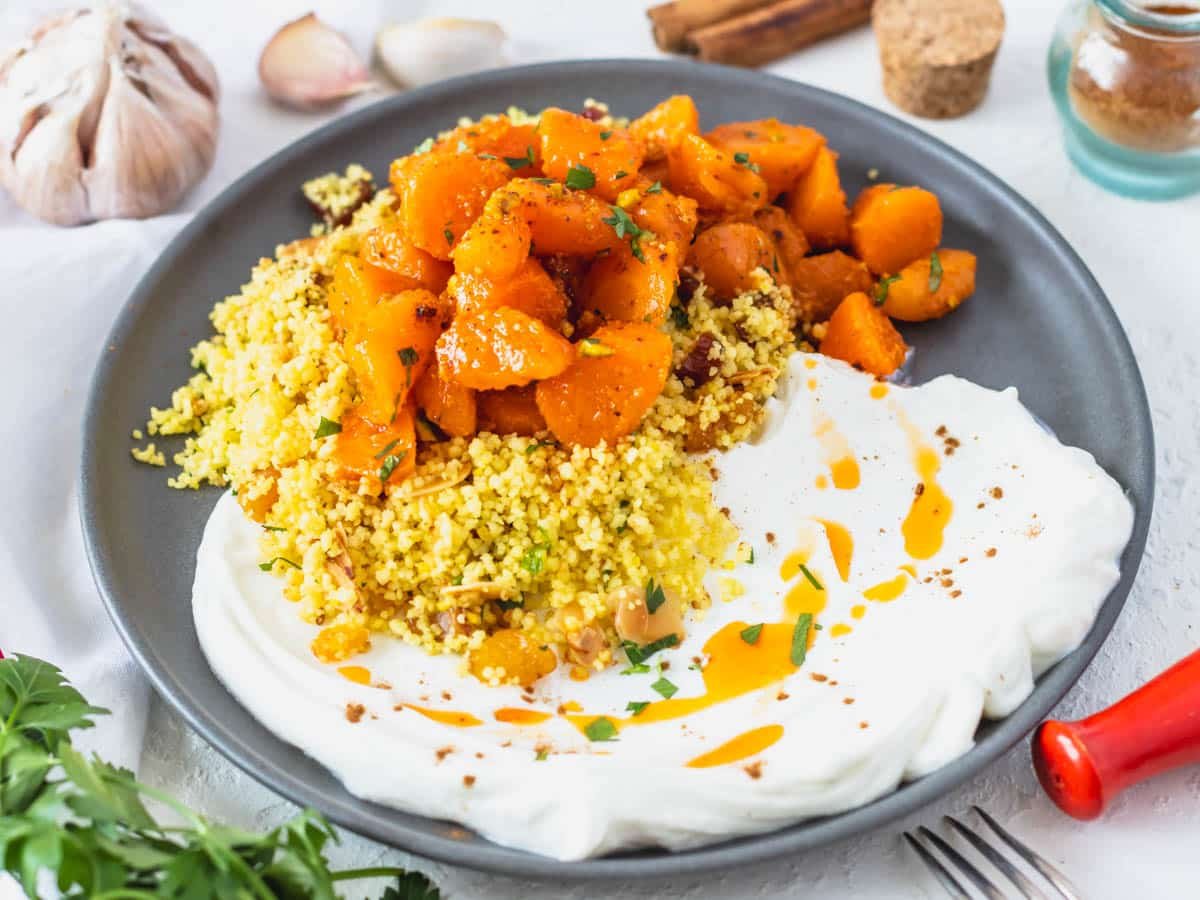
What is couscous?
Traditional couscous is a North African dish and staple food in the Maghreb, the western and central North African area comprising Morocco, Algeria, Tunisia, Mauritania, and Libya.
It’s also popular in France and Italy, and especially Sicily.
Traditional couscous is made with durum wheat semolina flour, the ingredient used to make most Italian dry pasta. It has a small granular shape; you can find it in most supermarkets pre-steamed and dried.
Nowadays, you can find two main types of couscous in the supermarket. Traditional couscous and Israeli couscous.
What is Israeli Couscous?
This blog post is not about Israeli couscous, also known as pearl couscous, but I’ll give you a short intro to it anyway.
It looks like tiny balls of toasted pasta made with semolina flour. In Israel, it’s called Ptitim.
You can cook pearl couscous like pasta in a pot with salted boiling water.
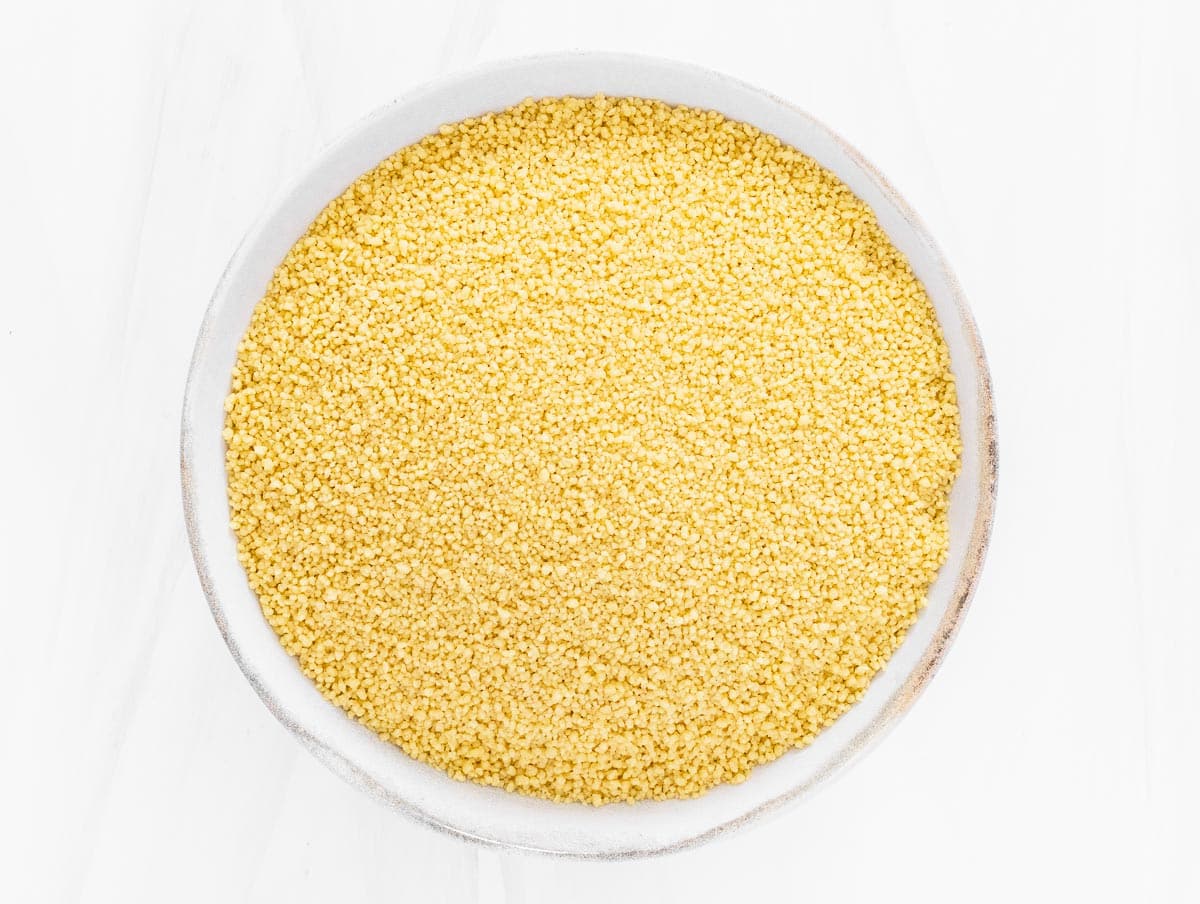
Ingredients & Substitutions
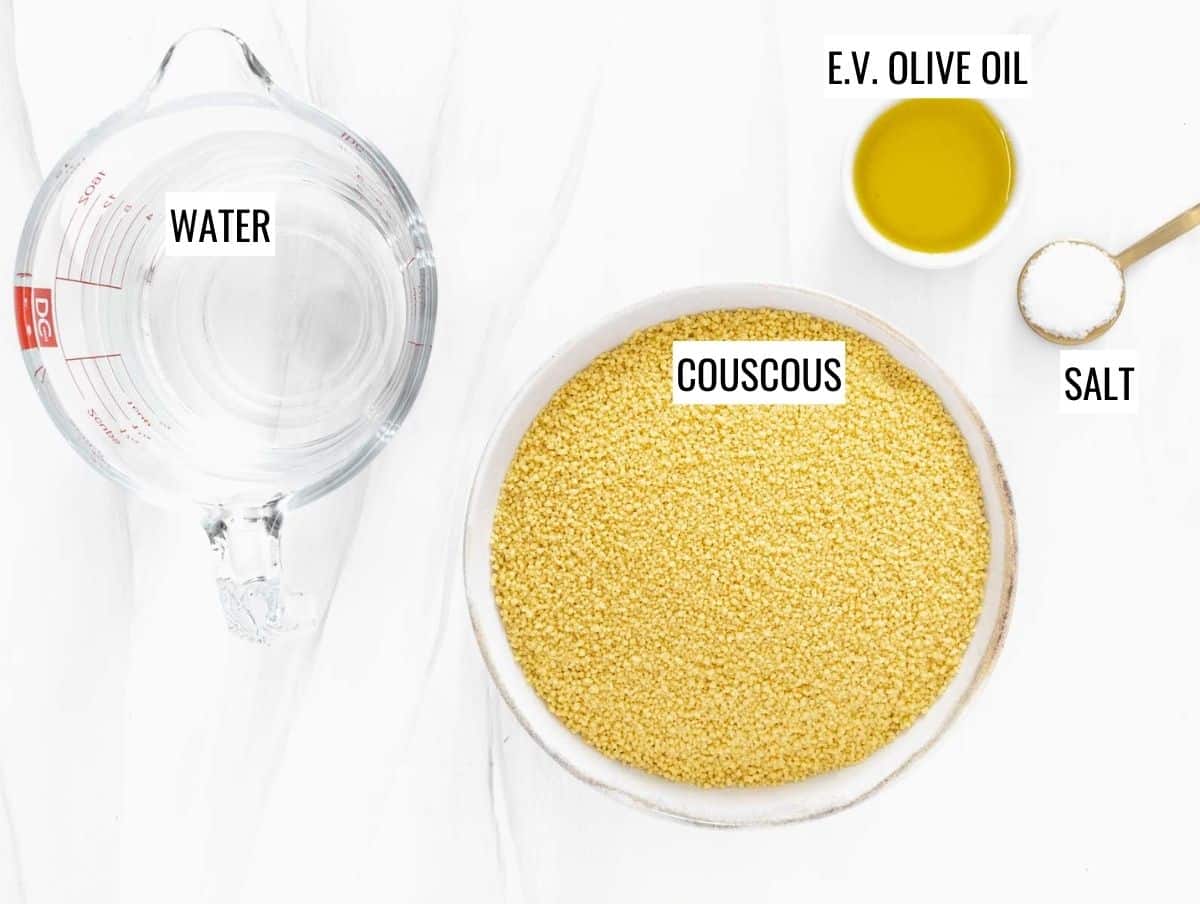
Quantities are in the recipe box at the bottom of the page.
Couscous
By couscous we mean traditional couscous, not pearl couscous.
It’s sold in all supermarkets, looks like small granules of pasta, is pre-steamed and dried, and takes 10 minutes to prepare.
There are two types of traditional couscous. White and whole wheat couscous. You can use either one.
Hot liquid
You can use boiling water, vegetable broth, or chicken broth. They should be hot, almost boiling.
Salt
Sea salt or kosher salt is best.
Olive oil
We recommend using extra virgin olive oil.
Substitute regular olive oil, melted butter, non-dairy butter, ghee, or smen – a salted fermented butter with an intense flavor – for extra virgin olive oil.
Extra virgin olive oil is the healthiest option as it contains heart-healthy fats and polyphenols.
Optional ingredients
Fresh herbs
You can add fresh flat-leaf parsley, coriander, or mint.
Saffron or Turmeric
Use a pinch of saffron or turmeric to add an appealing golden color.
Lemon juice
Prepare a few wedges of lemon to squeeze on the couscous before serving it.
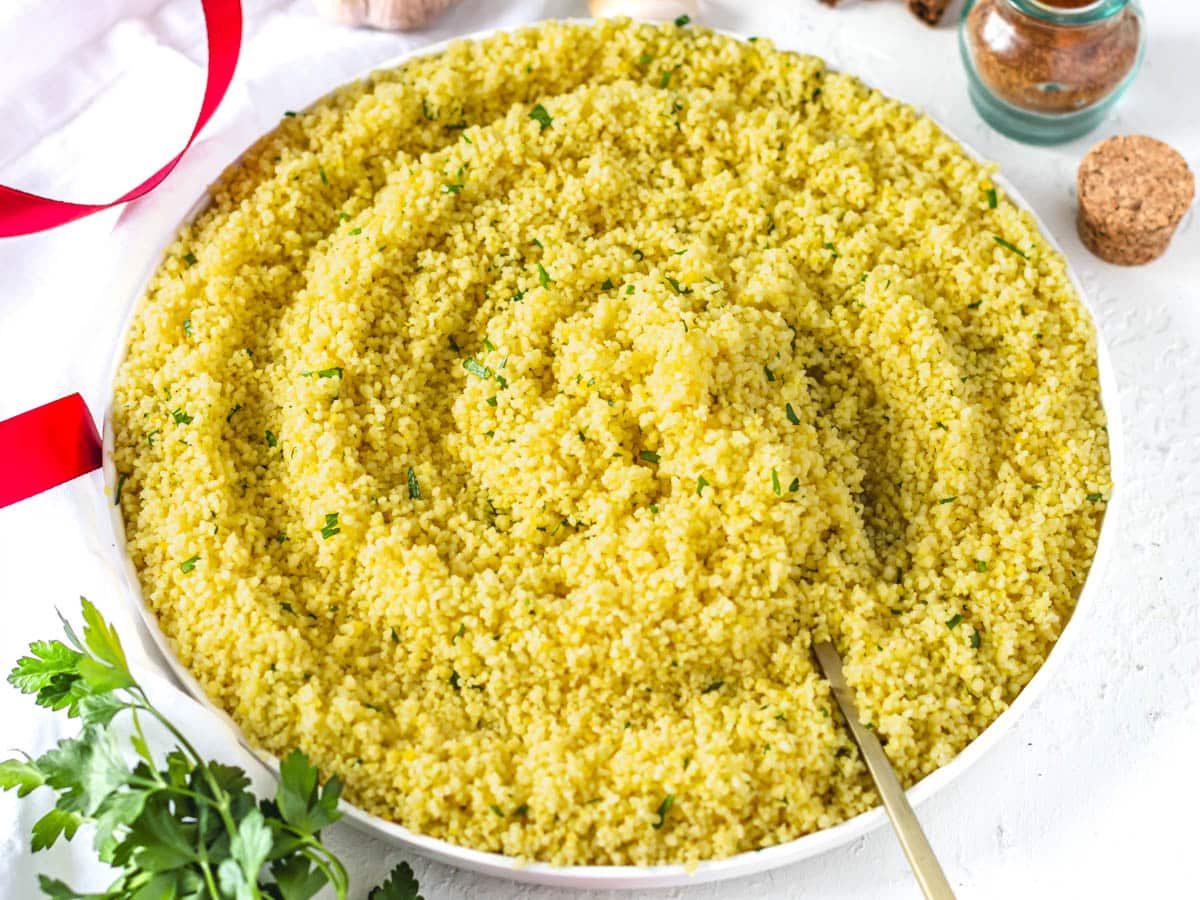
How to cook couscous
US cups + grams measurements in the recipe box at the bottom of the page.
Heat your liquid of choice – water or vegetable broth – until it boils. You can do so with a kettle or a medium saucepan on the stove.
In a large mixing bowl, add the saffron or turmeric and salt and dissolve them in 2 tablespoons of hot liquid.
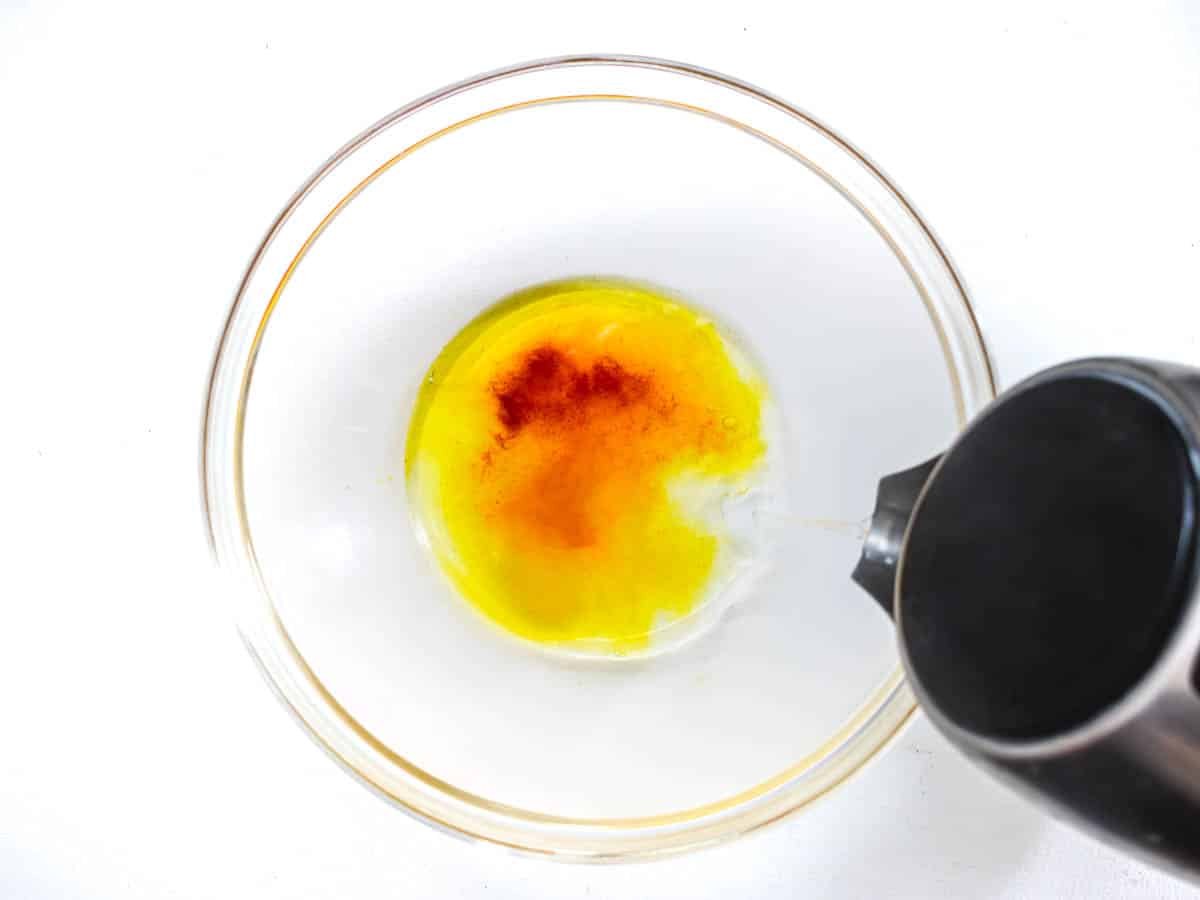
Add the couscous and cover it with the remaining hot water or broth. Stir to combine and set aside, covered with a lid, for 5 minutes.
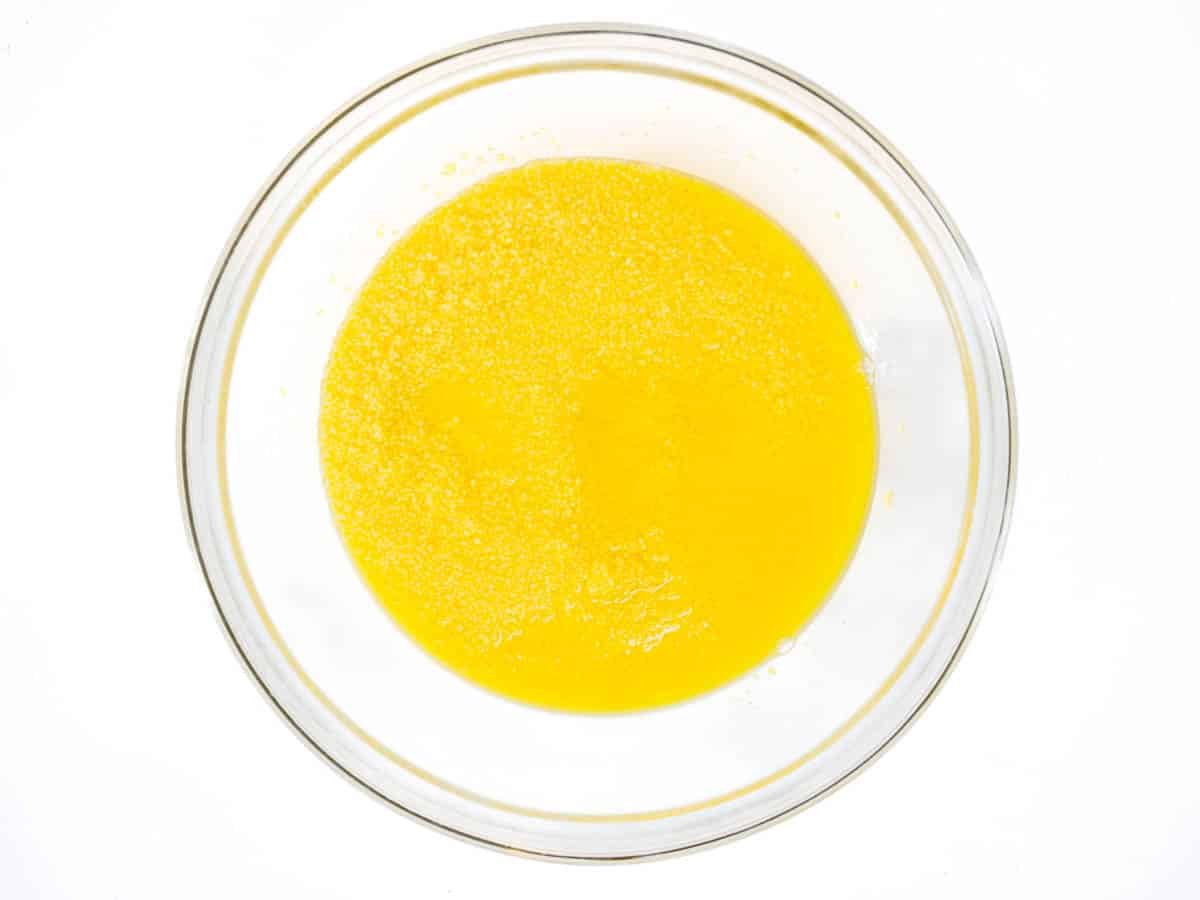
When all water has been absorbed, rake or fluff with a fork to separate its grains.
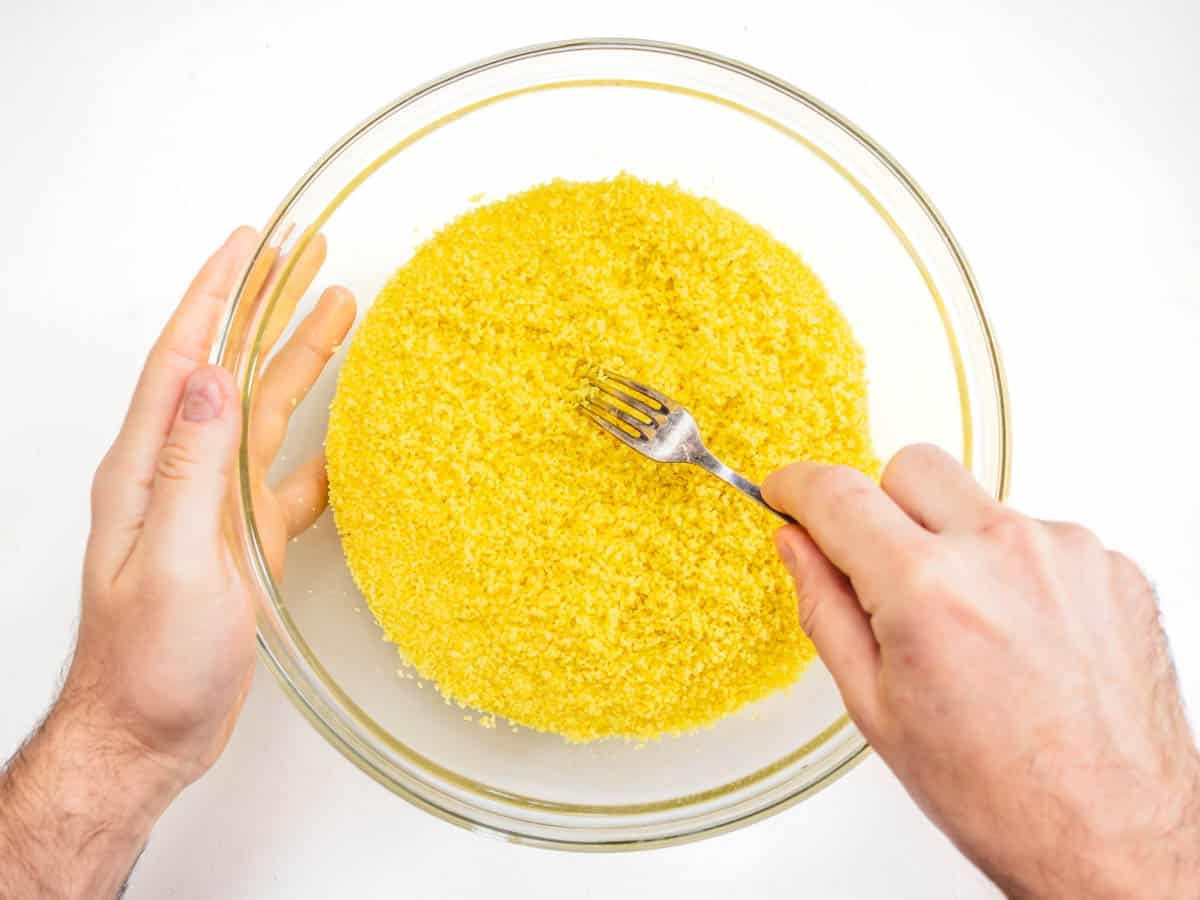
Add olive oil and chopped parsley, coriander, or mint.
Toss to combine, taste, and adjust for salt, and your basic couscous recipe is ready.
Tip: you can toss with your hands or with a spoon. I find it easier to do it with my hands to break off eventual lumps.
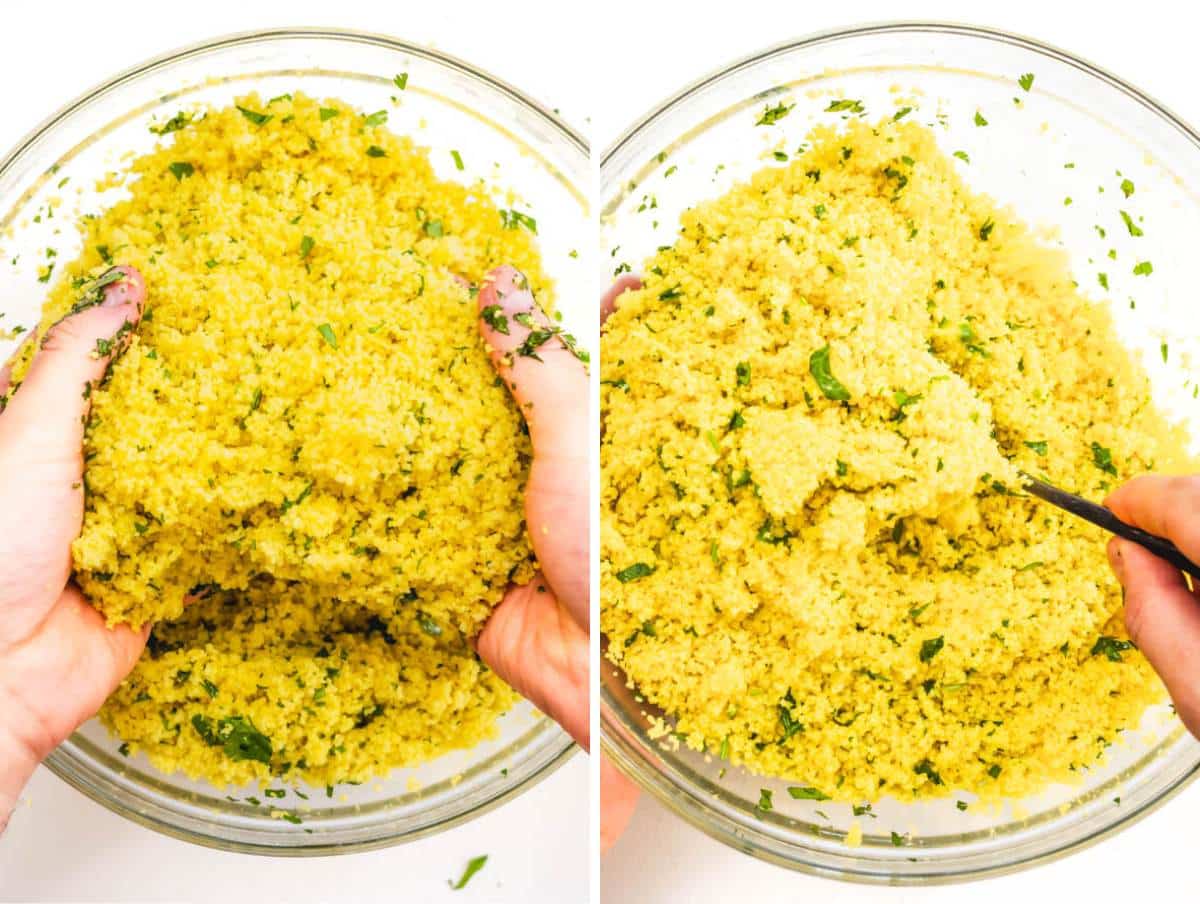
Serving Suggestions
Consider couscous as a versatile side dish and an alternative to bread, pasta, rice, and grains.
Its neutral flavor and fluffy texture are excellent with saucy dishes like stews, chunky soups, and salads.
In Morocco, where couscous is akin to a national dish, it is often served with tagine, and a dollop of yogurt.
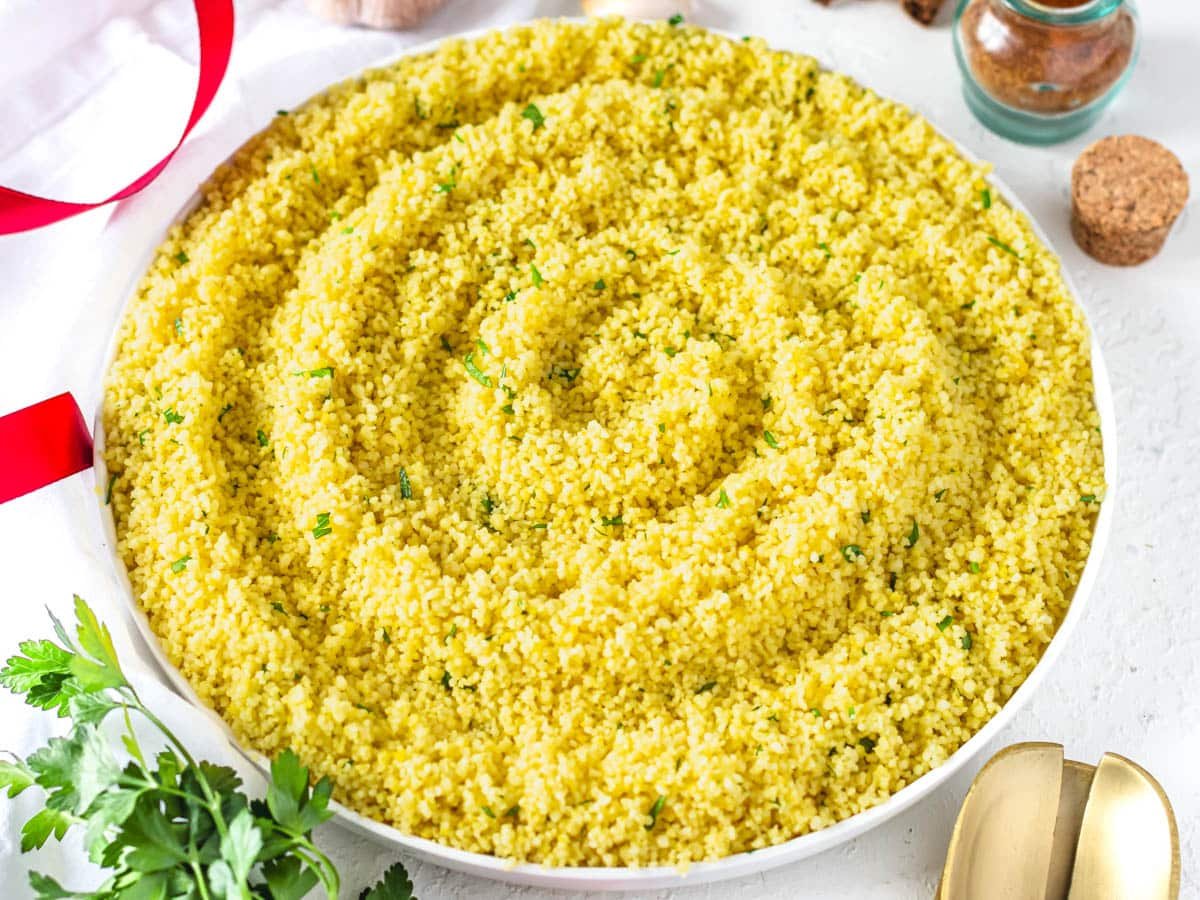
Use it as a base for curries and stews::
Mix it in salads:
- Lentil carrot salad
- Chickpea salad
- Moroccan carrot salad
- Lentil tabbouleh
- Shirazi salad
- Cauliflower lentil salad
Couscous as an appetizer:
- Tzatziki
- Zaalouk
- Hummus
- Falafel
- Greek yogurt, Labneh, and Yogurt Tahini Sauce
- Chopped tomatoes, and caramelized onions.
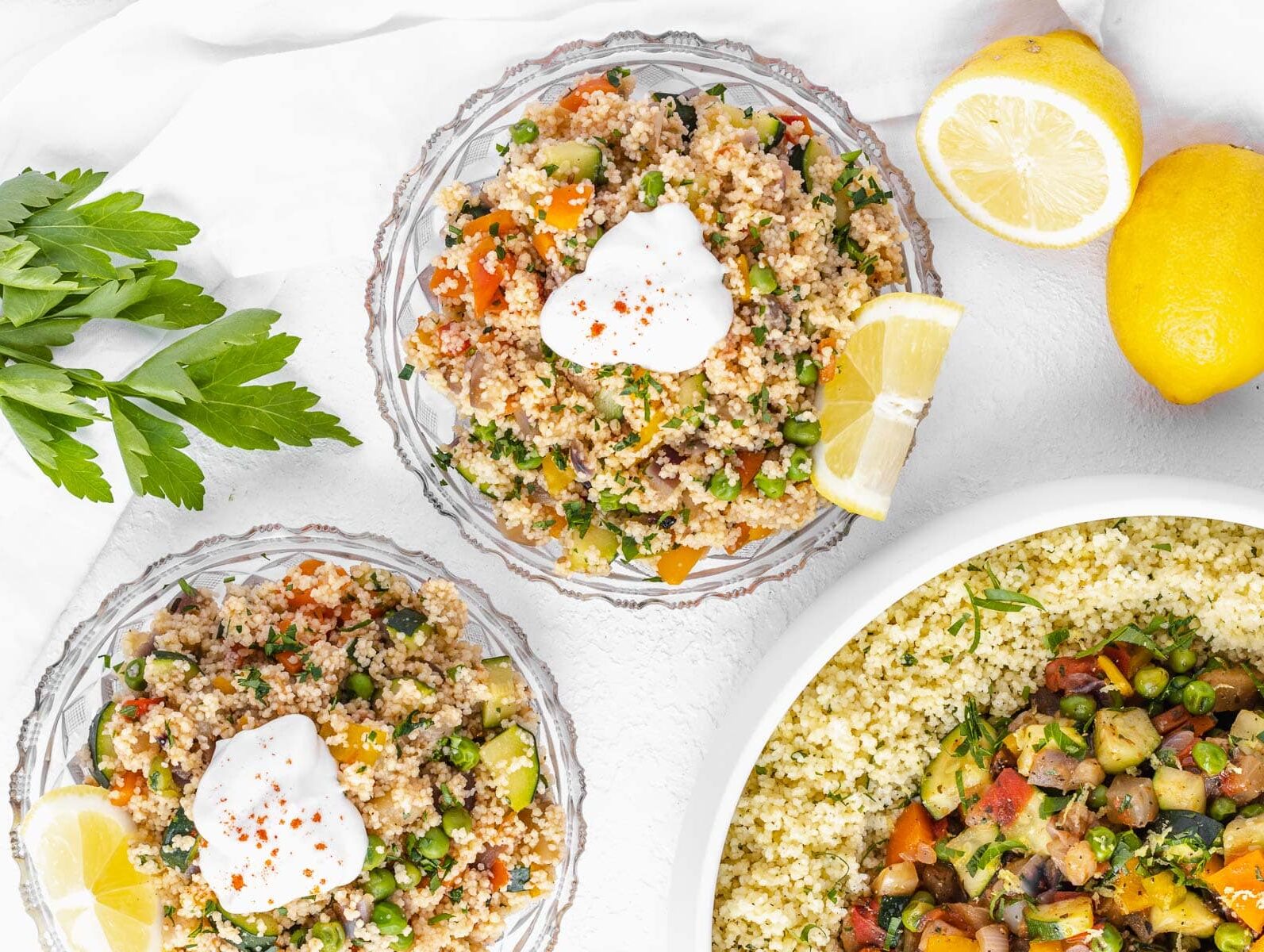
Variation
Moroccan Couscous
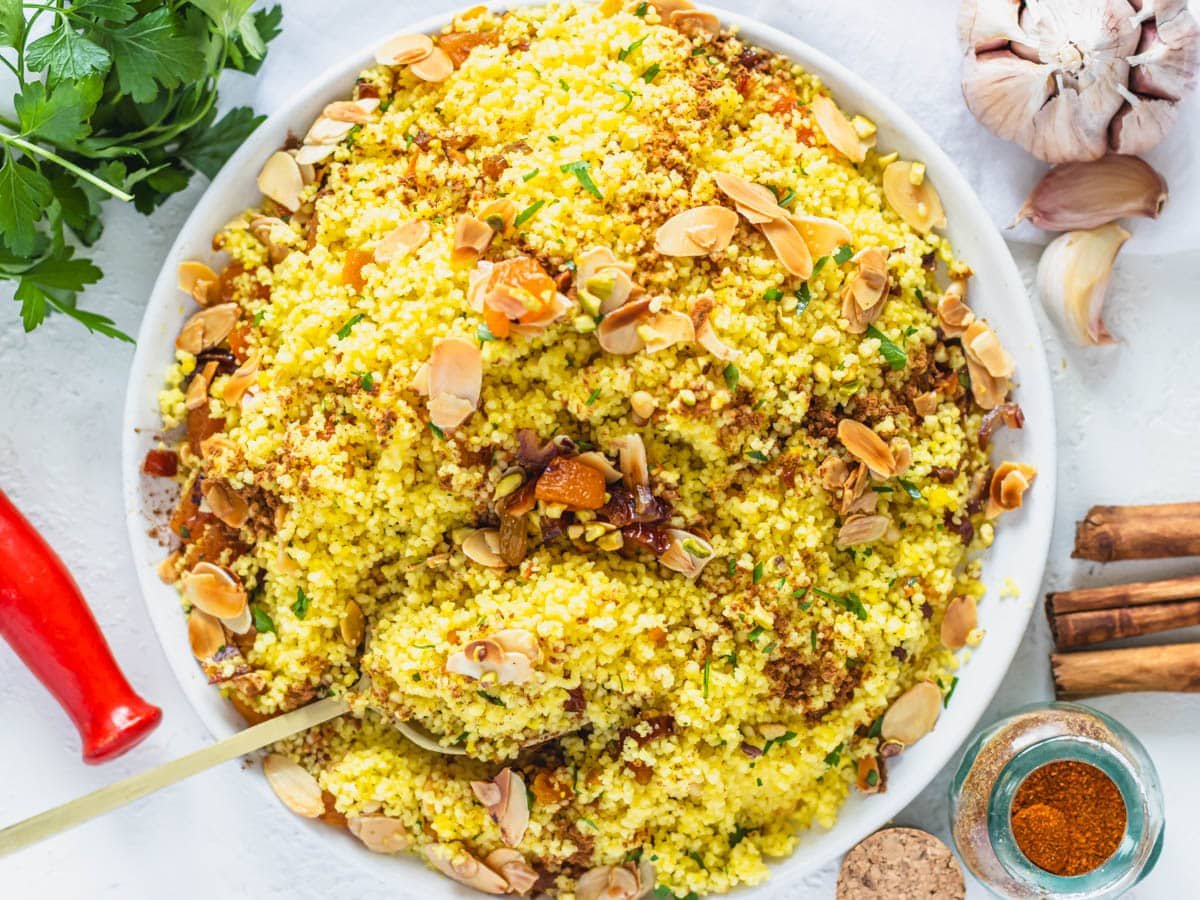
Moroccan couscous is a celebration of flavors and aromas. It’s made with nuts, dried fruits, and spices toasted in butter or olive oil.
They are then mixed in the couscous to create a wonderful and aromatic dish you can enjoy with some thick yogurt or as a base for other dishes.
Check out our Moroccan couscous recipe.
Tips
How much couscous should I make?
We usually make 2 cups of dry uncooked couscous or about 350-400 grams.
This is enough for 5-7 servings (we make more on purpose as it keeps well for days), depending on the type of sauce or stew you serve it with.
Consider about 1/3 cup or about 60 grams to serve one person.
Is couscous healthy?
Yes. We consider it a healthy food as it has virtually no fat or cholesterol, a good amount of plant-based protein, plenty of good carbs to keep you going for a long time, and dietary fiber.
Try whole wheat couscous, which contains even more dietary fiber, for an even healthier option.
Couscous Nutrition Information
Nutritional values are for 1 cup of dry couscous (3-4 servings) cooked with water and no salt, seasoning, or fat.
- Calories: 591
- Protein: 20g
- Carbohydrates: 122g
- of which sugars: 0.5g
- Fat: 0.8g
From a nutritional point of view, it makes sense to serve couscous with legumes such as chickpeas, lentils, and beans and legume derivatives such as tofu (tofu is made with soy, which is a legume), although that’s not strictly necessary in a single meal.
Eating couscous with various legumes and vegetables will provide plenty of protein, fiber, minerals, and vitamins.
Couscous contains gluten, and it is not suitable for people with celiac disease on a gluten-free diet.
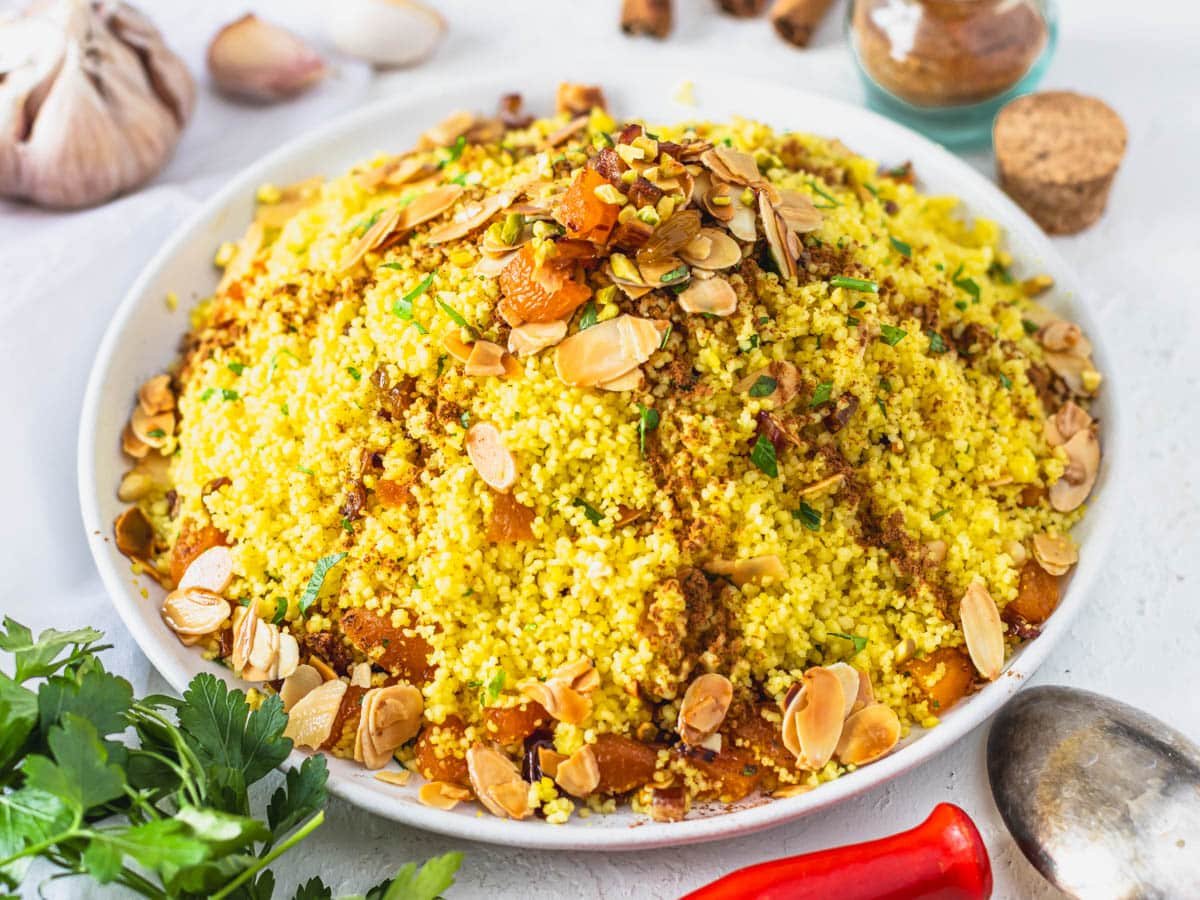
Questions
Since couscous is made with a grain called durum wheat semolina and water, it is more like pasta than a whole grain.
No, don’t rinse couscous before cooking it. Couscous does not need to be rinsed.
Couscous is traditionally made by hand by spraying water onto durum wheat semolina, then rubbing it with hands, sifting excess flour away, and drying it.
Humans have consumed Couscous for millennia, and it is so important in the culture and traditions of Algeria, Mauritania, Morocco, and Tunisia that it has received recognition as an Intangible Cultural Heritage of Humanity by UNESCO.
Nowadays, most couscous found in Western supermarkets is machine-made.
There are many ways to pronounce couscous, depending on the country. In English, it’s pronounced “koo·skoos.“
The ratio of hot liquid to uncooked couscous is 1 to 1.
You’ll need about 1 cup of water for 1 cup of dry couscous.
No. It should never be boiled. Hot cooking liquid – water or vegetable stock – should be poured over the couscous.
Storage & Make Ahead
Make ahead: couscous is excellent for meal prep as it keeps well for up to 5 days. Also, uncooked dry couscous keeps in your pantry for up to 1 year.
Storebought dry couscous keeps well in a dry corner of your pantry for up to 1 year.
Refrigerator: cooked couscous keeps well in the fridge in an airtight container for one week.
Freezer: spread the couscous over a large tray, put it in the freezer for two hours, then take it out, transfer it to a freezer-friendly container, and keep it for three months.
Thaw & Reheat: Defrost at room temperature for an hour or in the fridge for several hours. Reheat in the microwave for 1 to 2 minutes or serve cold, mixed with a warm stew or veggies.
Similar recipes
Find more tips and cooking guides here:
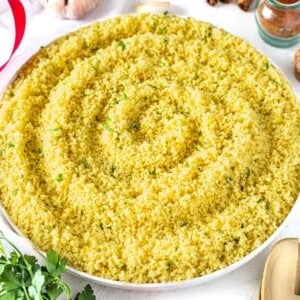
How to Cook Couscous
Ingredients
- 2 cups couscous dry
- 2 cups water or vegetable broth, boiling
- ⅛ teaspoon saffron or turmeric
- 1 teaspoon salt
- 2 tablespoons extra virgin olive oil or melted butter
- 4 tablespoons parsley chopped, swap mint or cilantro
Instructions
- Boil 2 cups water.To a large bowl, add ⅛ teaspoon saffron1 teaspoon salt, and dissolve them with 2 tablespoons of boiling water.
- Add 2 cups couscous and cover it with the remaining hot water. Stir to combine and set aside, covered with a lid, for 5 minutes.
- When all water has been absorbed, rake the couscous with a fork to separate its grains and fluff it up.
- Add 2 tablespoons extra virgin olive oil and 4 tablespoons parsley or cilantro (chopped).Toss to combine with a spoon or with your hands, lifting the grain in the air to aerate it.
- Taste and adjust for salt before serving on a platter. See the "serving suggestions" chapter for more serving ideas.
Video
Notes
Nutrition
If you liked this how-to-cook with couscous recipe, you might also like:

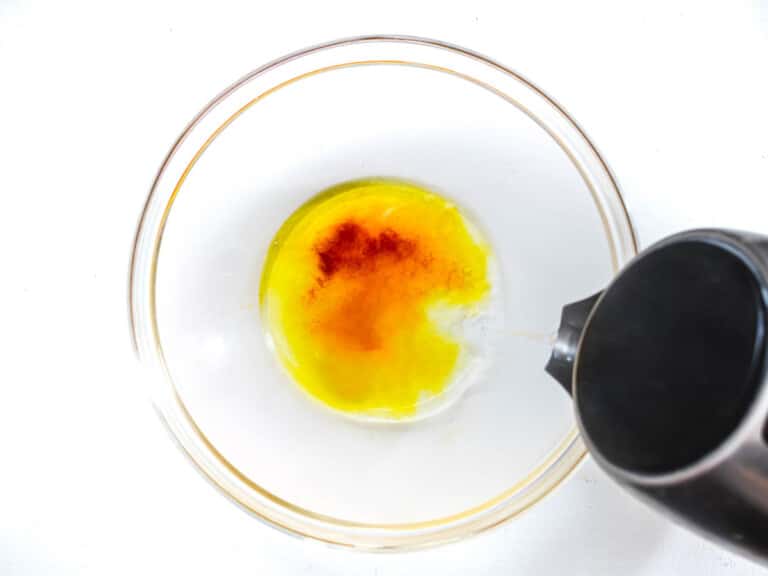
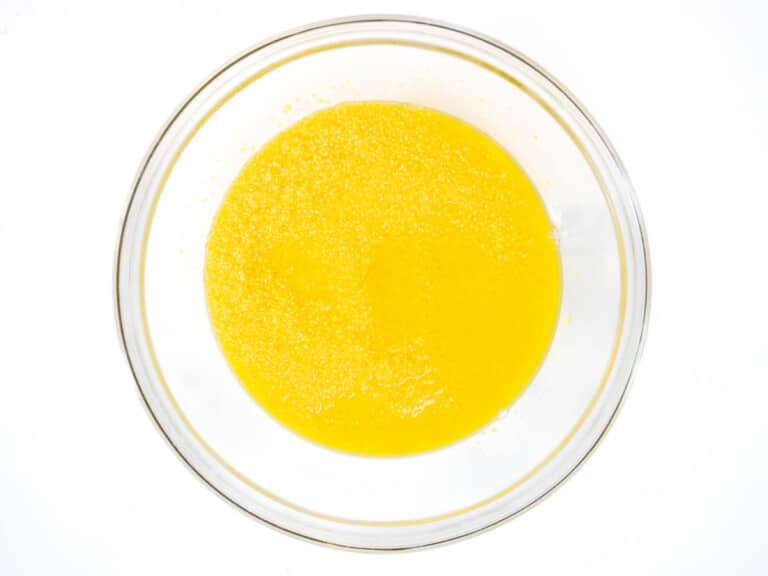
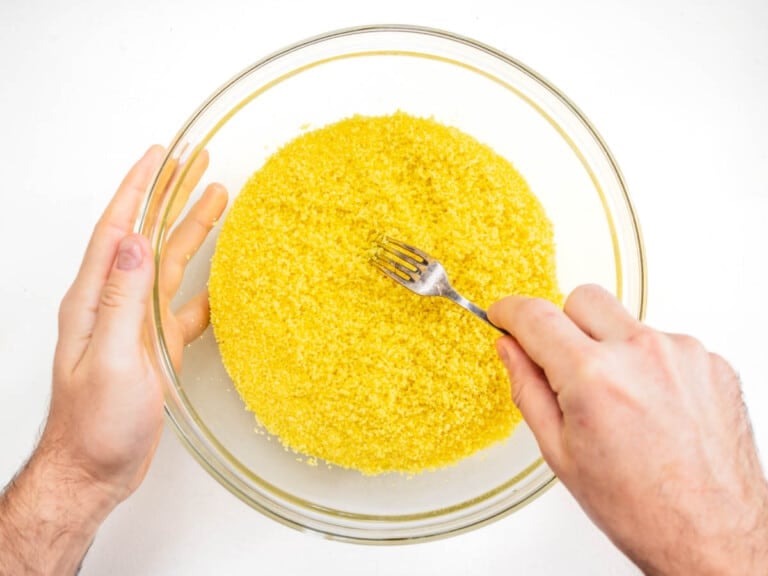
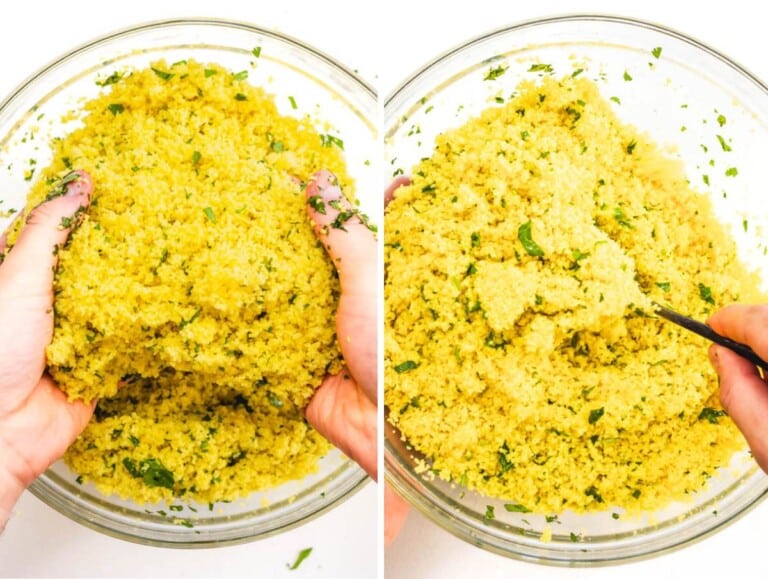
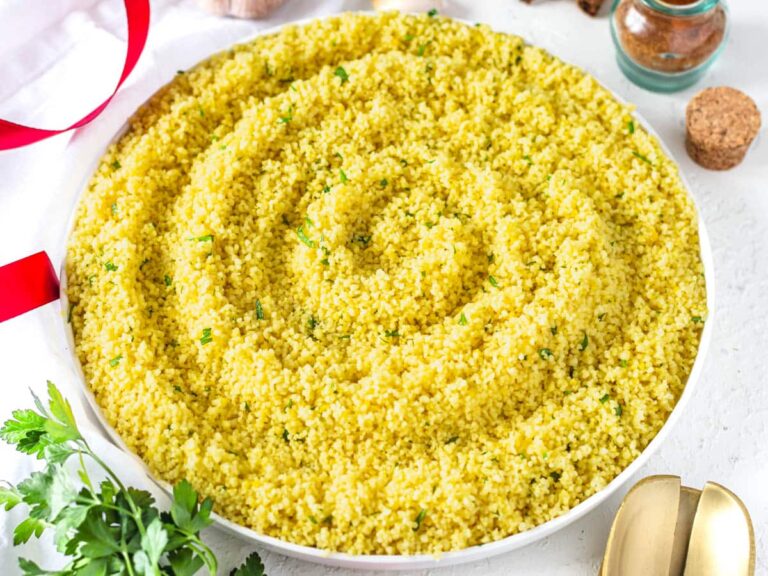
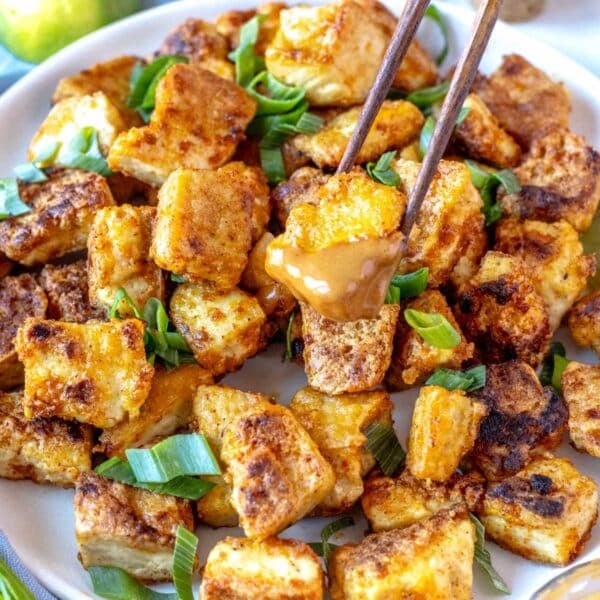
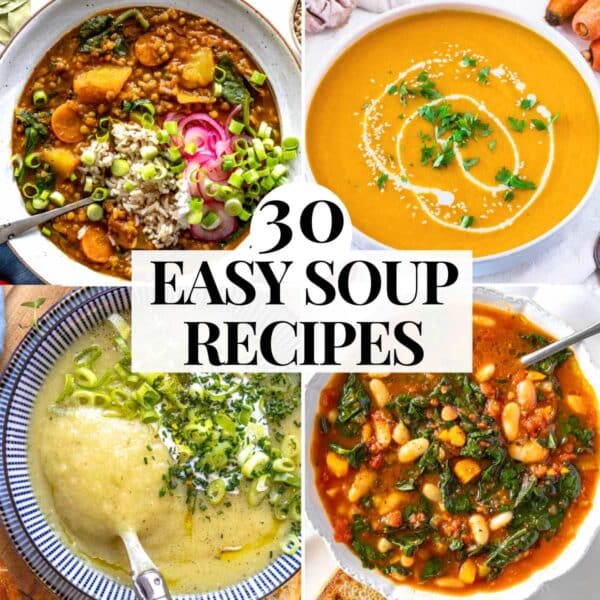

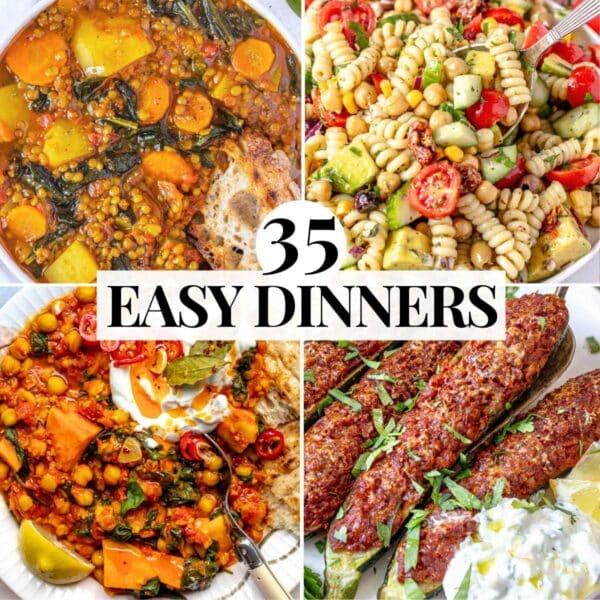

Easy!!
AS I AM FROM MADEIRA,WHICH IS CLOSE TO MOROCCO,WE EAT COUS COUS AT LUNCH & DINNER..KEEP UP THE GOOD WORK…QUERINO